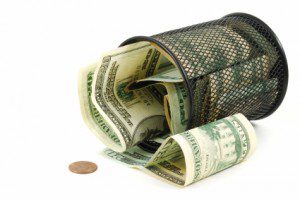- ERC Tax Return Amendment Rules Change - March 25, 2025
- Safe Financial Instruments Guide - December 4, 2024
- New Overtime Rule Increases the Salary Exemption Thresholds - November 19, 2024
 Seller’s Discretionary Cash Flow (SDCF), also sometimes referred to as seller’s discretionary income (SDI) or seller’s discretionary earnings (SDE), is a computation often used when valuing a small or medium-sized business.
Seller’s Discretionary Cash Flow (SDCF), also sometimes referred to as seller’s discretionary income (SDI) or seller’s discretionary earnings (SDE), is a computation often used when valuing a small or medium-sized business.
While larger, public companies are often valued using the price/earnings ratio (or the price of the stock divided by the company’s earnings) and Enterprise Value, smaller, private businesses may use a number of alternative methods to determine a fair sale price.
SDCF describes the pre-tax and pre-interest profits (EBIDTA) before non-related income or expenses, non-cash expenses, an owner’s compensation, one-time expenses, and adjusted expenses.
The ultimate purpose of SDCF is to calculate what a new owner could expect in terms of annual earnings. Typically, the SDCF is multiplied by a factor which results in the value of the small-to-medium sized business.
Each industry has its own customary factor for the valuation computation and over time the factor will increase and decrease due to changes in the industry.
SDCF Calculation
As described above, SDCF is calculated using six primary figures.
Begin with pre-tax and pre-interest profits (EBITDA) – Earnings before interest, taxes, depreciation, and amortization.
Add non-related expenses (or perks) and subtract one-time income – These include any income or expenses not related to the businesses annual operations. Examples may include, extended business trips for personal vacation, or car expenses when the business does not actually require a vehicle.
Income from a windfall, such as a lawsuit settlement, is an example of one-time income which would distort the normal SDCF if not subtracted.
Add one time expenses – This may include major website redesigns, certain licenses, one time fees, etc.
Add a single owner’s compensation – Add back the compensation from a single owner. Additional owners’ incomes who hold positions within the company should be adjusted for fair market value.
Account for adjusted expenses – Adjusted expenses may include any expense that will change over time, may arise in the future, or may be related to replacement expenses for equipment or other assets needed to operate the business which have exhausted their useful lives.
The SDCF Calculation Isn’t Always Black and White
This calculation tends to not be an exact science, but instead both the buyer and seller must come to an agreement about what exactly will be included in the SDCF calculation.
In fact, it is not uncommon for the buyer and the seller to disagree about the factors and the amounts added and subtracted to determine the SDCF for a business. For this reason, the business owner intending to sell his business should remove personal expenses from the business as much as possible.
Gray areas where the buyer and seller may disagree on the value of an earning, expense, or replacement cost often include:
Replacement Owner’s Benefit – For any company where there are multiple owners who are actively working for the business, only one owner’s benefit can be added back into earnings. An additional owner’s earnings should be adjusted to reasonable market rates (or what it would cost the new owner to fulfill the role based on the current market). Determining these values can sometimes lead to debate between buyer and seller.
Replacement Costs – Replacement costs are projections of what it might cost to replace current assets, and may be a source of disagreement for the buyer and seller. As an example, the seller may argue that some replacement costs may not be necessary, while they buyer may overestimate replacement costs or their frequency.
One Time Expenses – One time expenses typically are added back into earnings, since they are not ongoing costs. However, some of these “one-time” expenses may be disputed as recurring, such as a website design. In this example, a website redesign is typically considered a one-time cost although it can be argued that, at some point, the website will undergo additional updates or redesigns.
If you are considering selling your small or medium-sized business, understanding the SDCF is essential for valuing your business and setting a fair sale price.
Be prepared to negotiate through some of the less-concrete numbers, including those items above that often lead to disagreements between buyer and seller.












